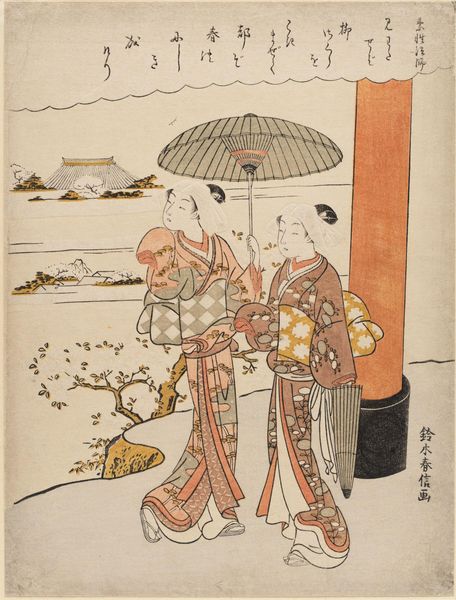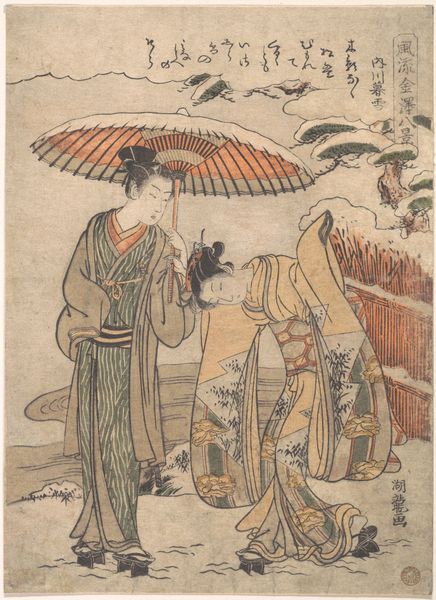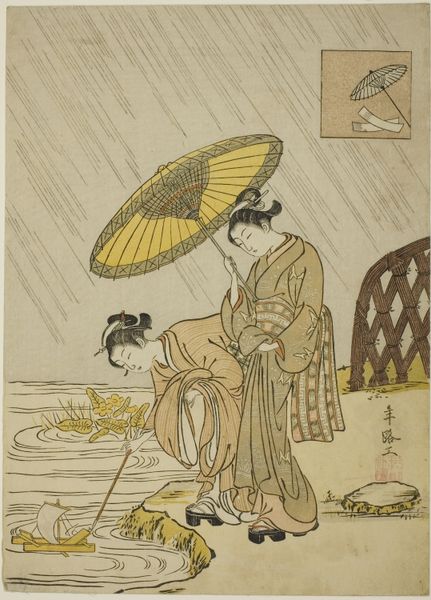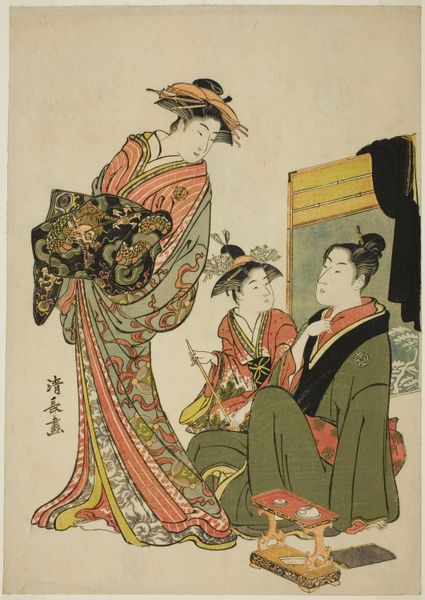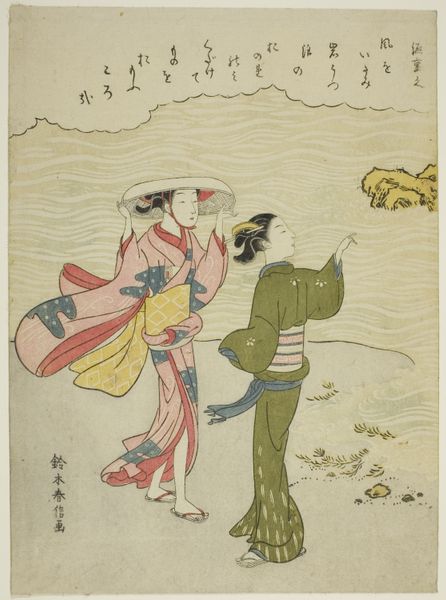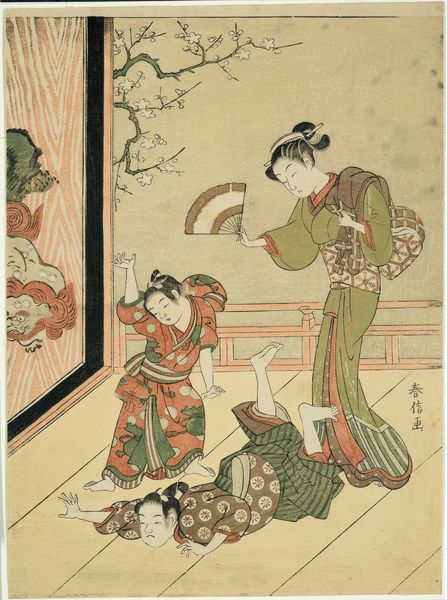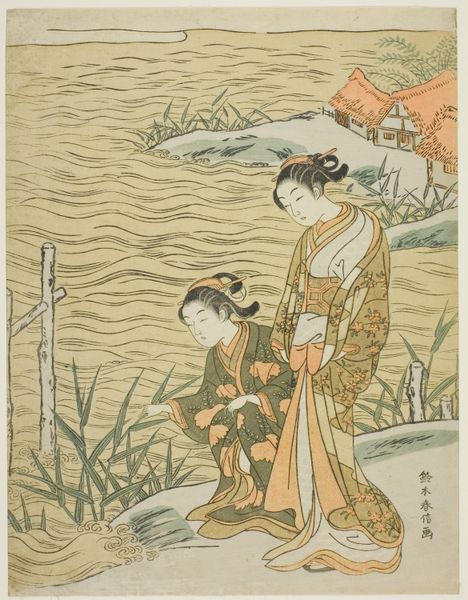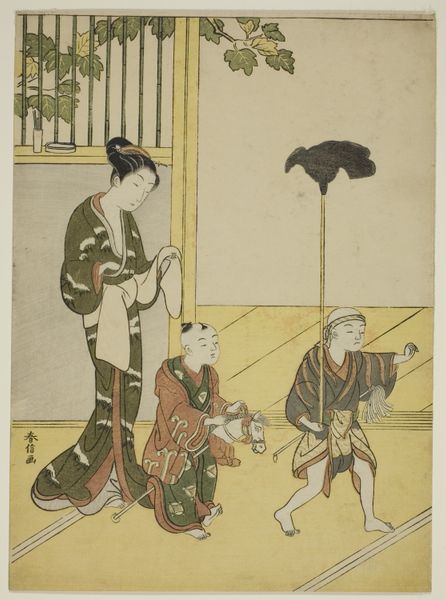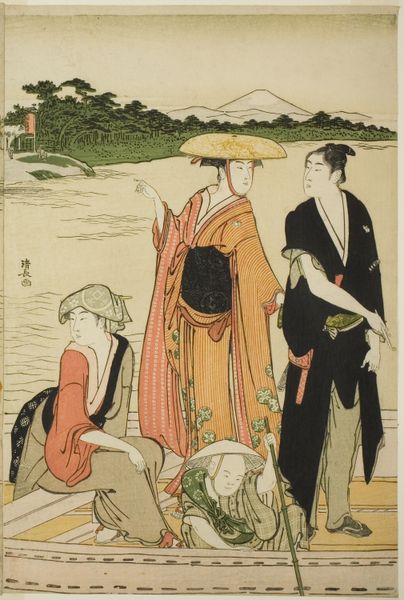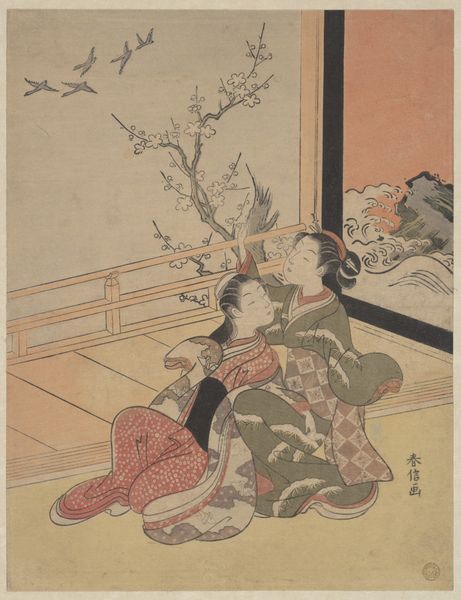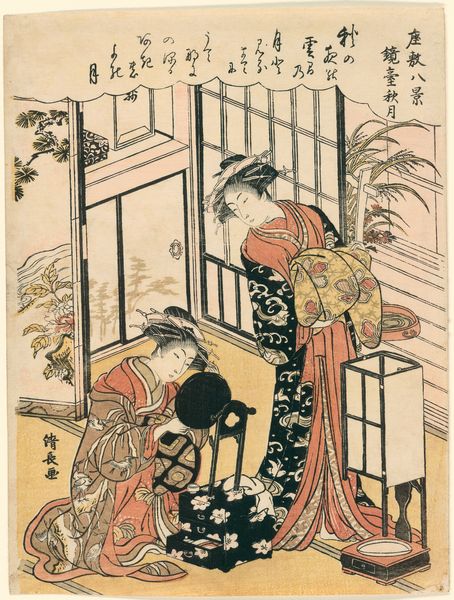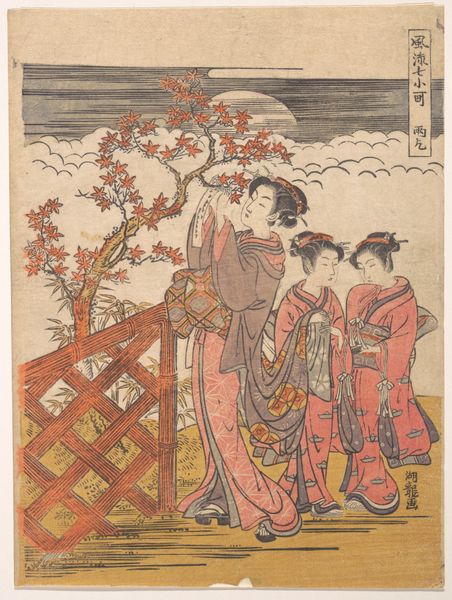
Poem by the Monk Sosei (act. 850-97) 1762 - 1775
0:00
0:00
print, woodblock-print
#
tree
# print
#
asian-art
#
landscape
#
ukiyo-e
#
figuration
#
woodblock-print
#
men
#
genre-painting
Dimensions: 10 7/8 x 8 in. (27.6 x 20.3 cm) medium-size print (chu-ban)
Copyright: Public Domain
Curator: This print, a woodblock print titled "Poem by the Monk Sosei," was created by Suzuki Harunobu sometime between 1762 and 1775. It's a stunning example of Ukiyo-e. Editor: There's a tranquility about this piece, a quietness. The palette is muted, but the arrangement feels sophisticated. I’m particularly drawn to how the geometry of the building in the distance mirrors the parasol’s form. Curator: Harunobu was indeed masterful with composition. Note how he layers the scene: the figures in the foreground, the landscape receding behind them, and the poem inscribed at the upper edge. The text, I believe, references a verse by the monk Sosei. Editor: Speaking of text, do you see how the graphic quality of the calligraphy and the delicate lines defining the figures interact? This seems intentional, suggesting that language, too, holds artistic merit, perhaps even comparable to the scenery itself. Curator: Precisely! That was a hallmark of Ukiyo-e. These images weren’t just decorations but visual narratives deeply entwined with cultural texts and social commentary. These “floating world” images captured fleeting moments of everyday life and theatre. Editor: I’m fascinated by these figures. Their postures, seemingly candid, appear to possess a theatrical quality. They're clearly staged yet capture something essential about their role and lives, don't they? Curator: Indeed, Harunobu masterfully balanced idealization and naturalism, capturing the beauty of Edo-period life while subtly adhering to contemporary ideals of feminine beauty and fashion. It gives an insight into the idealized public images the culture celebrated. Editor: This print’s emphasis on carefully arranged design over absolute realism allows for nuanced semiotic reading, which leads to a deep appreciation of the aesthetic quality of these compositions. Harunobu captured this ideal in beautiful harmony. Curator: He did. Harunobu distilled the era through image and word and provided us a vital artifact that is currently held here at the Metropolitan Museum of Art. Editor: It certainly prompts reflections on how our gaze interprets this crafted moment and its artistic value to history.
Comments
No comments
Be the first to comment and join the conversation on the ultimate creative platform.
